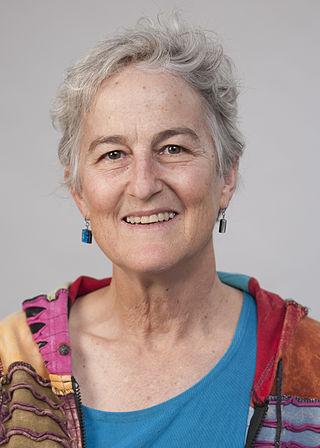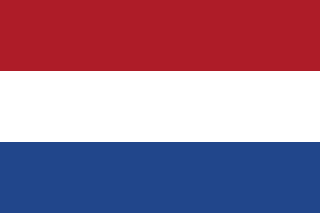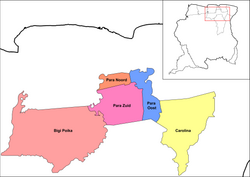
The division of labour is the separation of the tasks in any economic system or organisation so that participants may specialize (specialisation). Individuals, organizations, and nations are endowed with or acquire specialized capabilities, and either form combinations or trade to take advantage of the capabilities of others in addition to their own. Specialized capabilities may include equipment or natural resources as well as skills. Training and combinations of equipment and other assets acting together are often important. For example, an individual may specialize by acquiring tools and the skills to use them effectively just as an organization may specialize by acquiring specialized equipment and hiring or training skilled operators. The division of labour is the motive for trade and the source of economic interdependence.

Suriname, officially the Republic of Suriname, is a country in northern South America. It is bordered by the Atlantic Ocean to the north, French Guiana to the east, Guyana to the west, and Brazil to the south. At under 165,000 square kilometers, it is the smallest country in South America.

Unemployment, according to the OECD, is people above a specified age not being in paid employment or self-employment but currently available for work during the reference period.
The early history of Suriname dates from 3000 BCE when Native Americans first inhabited the area. The Dutch acquired Suriname from the English, and European settlement in any numbers dates from the 17th century, when it was a plantation colony utilizing slavery for sugar cultivation. With abolition in the late 19th century, planters sought labor from China, Madeira, India, and Indonesia, which was also colonized by the Dutch. Dutch is Suriname's official language. Owing to its diverse population, it has also developed a creole language, Sranan Tongo.

Para is a district of northern Suriname. Para's capital city is Onverwacht, with other towns including Paranam, and Zanderij. Para has a population of 24,700 and an area of 5,393 km2. The district is the mining and forestry centre of Suriname, with many large bauxite mining operations operating. The district is a mixture of forest and savannas.

The Paramaccan or Paramaka are a Maroon tribe living in the forested interior of Suriname, mainly in the Paramacca resort, and the western border area of French Guiana. The Paramaccan signed a peace treaty in 1872 granting the tribe autonomy.
Social issues in China are wide-ranging, and are a combined result of Chinese economic reforms set in place in the late 1970s, the nation's political and cultural history, and an immense population. Due to the significant number of social problems that have existed throughout the country, China's government has faced difficulty in trying to remedy the issues. Many of these issues are exposed by the Chinese media, while subjects that may contain politically sensitive issues may be censored. Some academics hold that China's fragile social balance, combined with a bubble economy makes China a very unstable country, while others argue China's societal trends have created a balance to sustain itself.

Jodensavanne was a Jewish plantation community in Suriname, South America, and was for a time the centre of Jewish life in the colony. It was established in the 1600s by Sephardi Jews and became more developed and wealthy after a group of Jews fleeing persecution in Brazil settled there in the 1660s. It was located in what is now Para District, about 50 km (31 mi) south of the capital Paramaribo, on the Suriname River. Sugarcane plantations were established and Black African people were used as slave labour. At its height in around 1700 it was home to roughly 500 plantation owners and 9000 slaves. The colony faced regular attacks from Indigenous people, slave revolts, and even raids from the French navy. The community eventually relocated to the capital of Paramaribo. Clearing of grave sites and maintenance of the synagogue ruins has been attempted at various times from the 1940s to the 21st century.

The Kalina, also known as the Caribs or mainland Caribs and by several other names, are an Indigenous people native to the northern coastal areas of South America. Today, the Kalina live largely in villages on the rivers and coasts of Venezuela, Guyana, Suriname, French Guiana, and Brazil. They speak a Cariban language known as Carib. They may be related to the Island Caribs of the Caribbean, though their languages are unrelated.

Nancy Folbre is an American feminist economist who focuses on economics and the family, non-market work and the economics of care. She is professor of economics at the University of Massachusetts Amherst.
Global workforce refers to the international labor pool of workers, including those employed by multinational companies and connected through a global system of networking and production, foreign workers, transient migrant workers, remote workers, those in export-oriented employment, contingent workforce or other precarious work. As of 2012, the global labor pool consisted of approximately 3 billion workers, around 200 million unemployed.

Surinamese people are people who identify with the country of Suriname. This connection may be residential, legal, historical or cultural. For most Surinamese, several of these connections exist and are collectively the source of their being Surinamese.

The Ndyuka people or Aukan people (Okanisi), are one of six Maroon peoples in the Republic of Suriname and one of the Maroon peoples in French Guiana. The Aukan or Ndyuka speak the Ndyuka language. They are subdivided into the Opu, who live upstream of the Tapanahony River in the Tapanahony resort of southeastern Suriname, and the Bilo, who live downstream of that river in Marowijne District

Surinamese culture has strong Asian, African and European influences. The population is mainly composed of the contribution of people from India, Africa, China, Europe, and Indonesia, as well as indigenous peoples who lived in the area, before the arrival of European settlers.
The anthropology of development is a term applied to a body of anthropological work which views development from a critical perspective. The kind of issues addressed, and implications for the approach typically adopted can be gleaned from a list questions posed by Gow (1996). These questions involve anthropologists asking why, if a key development goal is to alleviate poverty, is poverty increasing? Why is there such a gap between plans and outcomes? Why are those working in development so willing to disregard history and the lessons it might offer? Why is development so externally driven rather than having an internal basis? In short, why is there such a lack of planned development?

James Mahmud Rice is an Australian sociologist in the Demography and Ageing Unit, Melbourne School of Population and Global Health, University of Melbourne. He works at the intersection of sociology, economics, and political science, focusing in particular on inequalities in the distribution of economic resources such as income and time and how private and public conventions and institutions shape these inequalities.

Suriname was a constituent country of the Kingdom of the Netherlands between 1954 and 1975. The country had full autonomy, except in areas of defence and foreign policy, and participated on a basis of equality with the Netherlands Antilles and the Netherlands itself in the Kingdom of the Netherlands. The country became fully independent as the Republic of Suriname on 25 November 1975.

Surinam, also unofficially known as Dutch Guiana, was a Dutch plantation colony in the Guianas, bordered by the equally Dutch colony of Berbice to the west, and the French colony of Cayenne to the east. It later bordered British Guiana from 1831 to 1966.
Political economy in anthropology is the application of the theories and methods of historical materialism to the traditional concerns of anthropology, including but not limited to non-capitalist societies. Political economy introduced questions of history and colonialism to ahistorical anthropological theories of social structure and culture. Most anthropologists moved away from modes of production analysis typical of structural Marxism, and focused instead on the complex historical relations of class, culture and hegemony in regions undergoing complex colonial and capitalist transitions in the emerging world system.

Human rights in Suriname are currently recognised under the Constitution of the Republic of Suriname of 1987. Suriname is a constitutional democracy with a president elected by the unicameral National Assembly. The National Assembly underwent elections in 2020, electing Chan Santokhi as president. The National Assembly has a commission pertaining to issues regarding the country's human rights. The Human Rights Office of the Ministry of Justice and Police is responsible for advising the government on regional and international proceedings against the state concerning human rights. Human rights in Suriname is periodically reviewed by the United Nations Human Rights Committee (UNHRC), on which it is often believed the level of human rights do not yet meet international standards.















